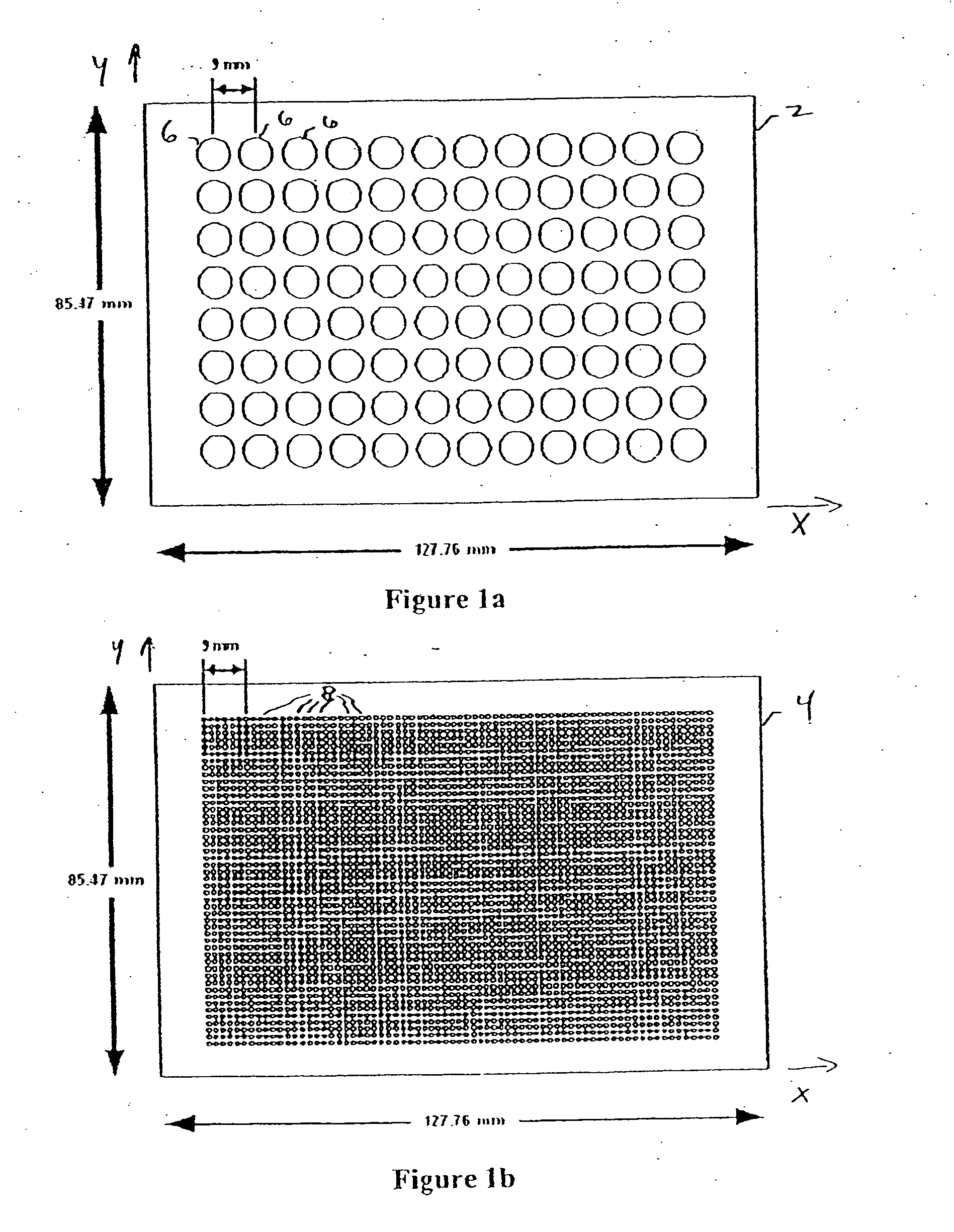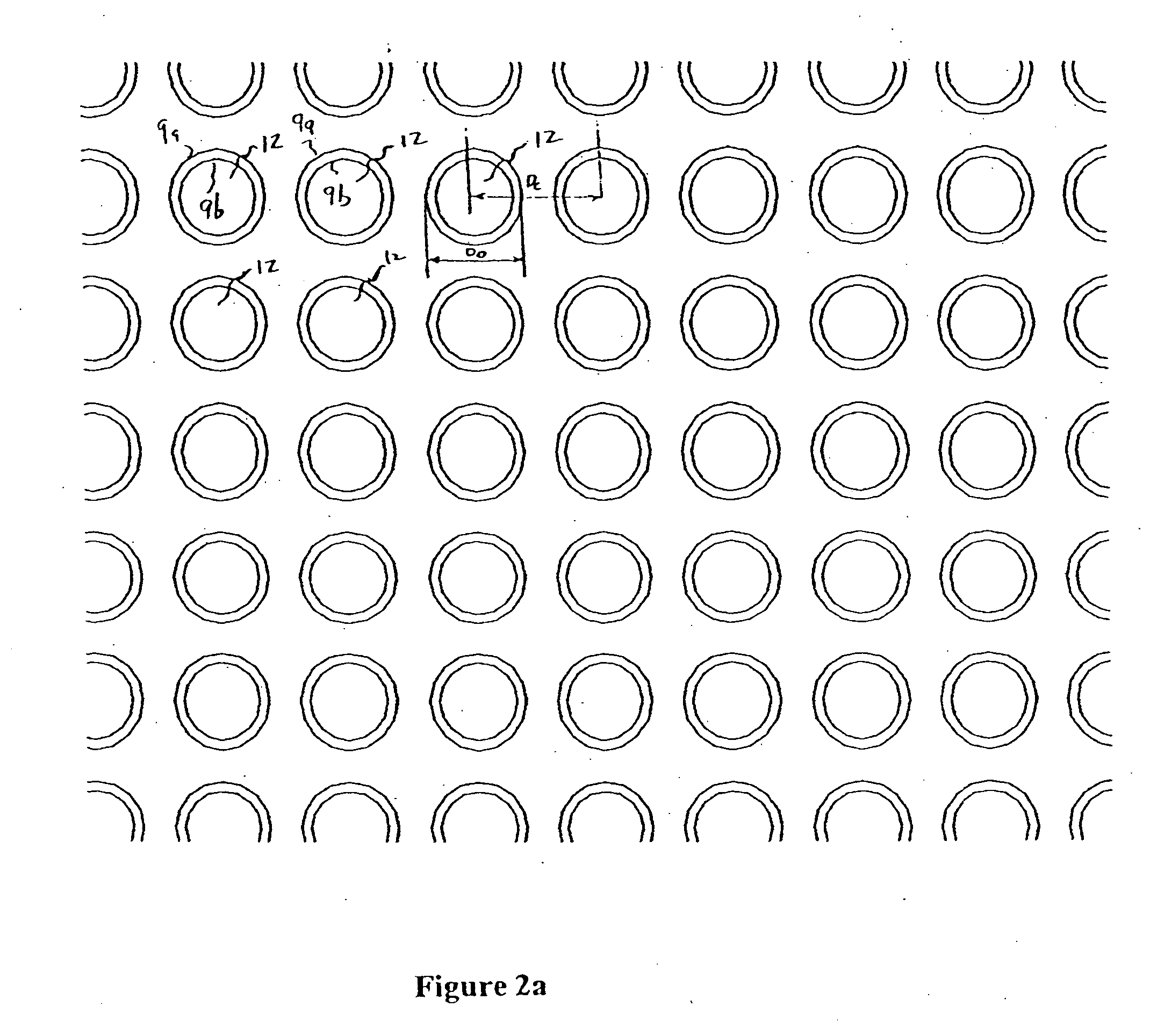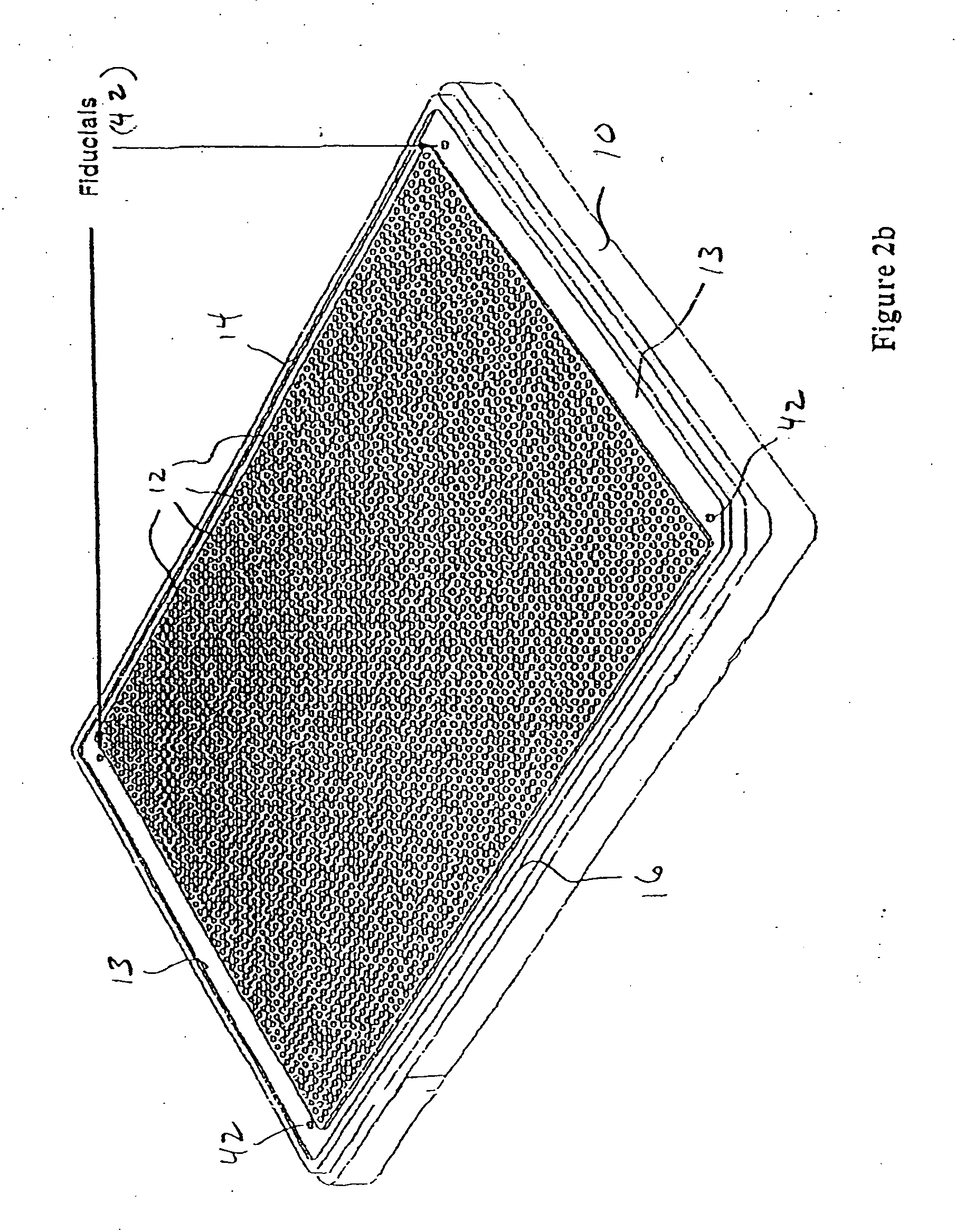Multi-well plate providing a high-density storage and assay platform
a multi-well plate, high-density technology, applied in the field of multi-well plates, can solve the problems of polystyrene adversely affecting the sensitivity of fluorescence assay, difficult to combine all these desirable features into a single, multi-functional, low-cost plate, etc., and achieve the effect of low autofluorescen
- Summary
- Abstract
- Description
- Claims
- Application Information
AI Technical Summary
Benefits of technology
Problems solved by technology
Method used
Image
Examples
example 1
High Density Multi-Well Platform
[0167]FIGS. 6a-6f show a multi-well platform 60 in accordance with a preferred embodiment. Specifically, FIGS. 6a-6f respectively, schematically illustrate top, bottom, front, rear and opposing side views of a multiple-well plate 60 in accordance with a preferred embodiment.
[0168] An injection molded multi-well plate 60 was made such that the inner array of 3456 wells (48×72 wells) extended completely through the platform from top to bottom while the two outermost rows and two outermost columns of wells 62 (244 wells) extended only halfway through the platform from the top to provide evaporation control (see FIGS. 3a-3b, 4b and 5 and corresponding description above). This illustrative multi-well platform 60 shown comprises a frame wherein the wall of a well is disposed in the frame. The frame is 3.25 mm thick. On the top part of the frame in the area completely surrounding the frame, topological markings were molded to provide reference coordinates ...
example 2
Dispensing Compounds to a Multi-Well Plate and Spectrometric Detection of Dispensed Liquid
[0172] In this example, chemical compounds were dispensed into a multi-well plate constructed as described in Example 1. The compounds were mixed with a fluorescent marker to enable determination of whether liquid was successfully dispensed to each well.
[0173] A series of chemical compound concentrates dissolved in 75:25 (by volume) DMSO:water stored in a 1536-well plate were dispensed to a second, initially empty, 1536-well plate. Dispensing was performed by using a commercially available automated liquid-handling system (Sciclone, Zymark Corp., Woburn, Mass.). The volume of compound concentrate dispensed to each well was 6.4 μL. Then 0.7 μL of a solution of 2 mM fluorescein dissolved in 75:25 DMSO:water was dispensed to each well on top of the 6.4 μL of compound concentrate previously dispensed to each well by using a pressure-driven solenoid-actuated dispenser (described in more detail in ...
example 3
Control of Liquid Sample Evaporation in the Multi-Well Platform
[0178] In this example, the wells (e.g., element 22 of FIGS. 3a-3b) that are along the edge of the well array and extend only halfway through the platform are used to prevent evaporation of the fluid contents in the wells (e.g., elements 12 of FIGS. 3a-3b) that extend all the way through the platform.
[0179] In this example, each well in a 3456-well plate constructed as described in Example 1 was filled with 2 μL of fluorescein using the pressure-driven solenoid actuated dispensing system described in example 4. In addition, each of the 244 evaporation control wells received 1.0 μL of DMSO:water. A second 3456-well plate, not constructed with the evaporation control wells or other features in accordance with a preferred embodiment, was prepared in which the sample wells were filled with 2 μL of fluorescein by using the same dispensing methodology as described for the first plate. The plates were fitted with lids, and th...
PUM
 Login to View More
Login to View More Abstract
Description
Claims
Application Information
 Login to View More
Login to View More - R&D
- Intellectual Property
- Life Sciences
- Materials
- Tech Scout
- Unparalleled Data Quality
- Higher Quality Content
- 60% Fewer Hallucinations
Browse by: Latest US Patents, China's latest patents, Technical Efficacy Thesaurus, Application Domain, Technology Topic, Popular Technical Reports.
© 2025 PatSnap. All rights reserved.Legal|Privacy policy|Modern Slavery Act Transparency Statement|Sitemap|About US| Contact US: help@patsnap.com



